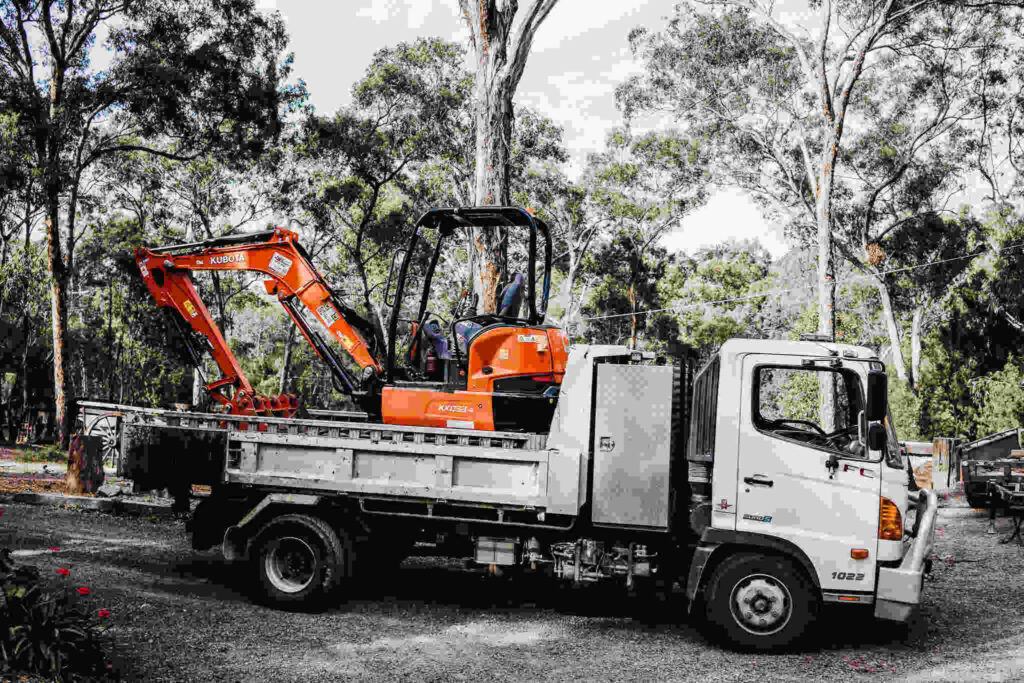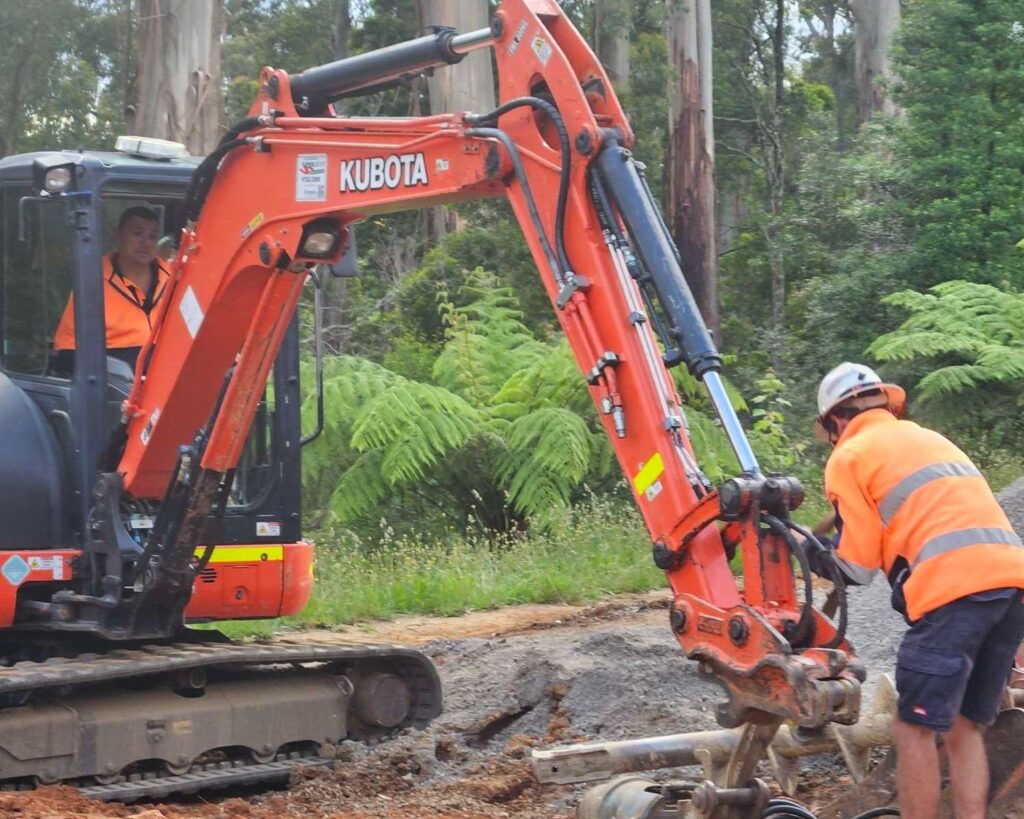Table of Contents
What Makes A Good Excavator?
If you’re renting or buying an excavator, you should have a good understanding of the different types of excavators, their capabilities, and their drawbacks before you get one.
Excavators are earthmoving machines that have an arm, bucket, revolving cab, and moveable tracks. The most significant difference between the models is their scale, which is also related to the range of mobility, lift, and digging ability. Caterpillar’s smallest mini-excavator, for example, weighs just 2,070 pounds and has 13 horsepower, while the CAT 6090 weighs a world-record-breaking 2,160,501 pounds and has 4,500 horsepower.
Depending on the working conditions and job requirements, you’ll need a different form of an excavator. Will you have to dig in the sand or in the water? Your best option could be a dragline excavator or a long-reach excavator. Will you be employed in a mountainous area? Then a crawler might be the best option for you.
We’ll go over seven different types of excavators and their various applications below.

7 Types Of Excavators And Their Uses
1. Crawler Excavators
Crawlers, unlike other large excavators that operate on wheels, operate on two large, endless tracks. They are commonly used in mining and heavy-duty construction. These excavators, also known as compact excavators, use hydraulic power mechanisms to lift heavy debris and dirt.
Their chain wheel system makes it easier for them to slip down and climb hills, making them perfect for grading hilly areas and landscaping uneven terrain. Crawlers are slower than other excavators, but they provide more overall balance, versatility, and stability.
Used for: Mining, Trench Digging, Landscape Grading
2. Suction Excavator
Suction excavators remove dirt, soil, and debris with water jets and a high-pressure vacuum. They are also known as vacuum excavators and have a suction shaft that acts as a high-pressure vacuum. The suction machine, which works in combination with a built-in water jet, quickly sucks up soil and debris at speeds of up to 200 miles per hour.
Used for: Underground Applications, Debris Cleanup, And Other Delicate Excavation Projects
3. Dragline Excavators
Draglines are divided into two types: those that are based on standard lifting cranes and those that must be installed on-site. Most crawler cranes may be used as a dragline if they have a front-mounted winch drum. These cranes, like other cranes, are designed to be dismantled and transported on flatbed trailers over the road. This smaller crane-style dragline is almost often used in civil engineering.
Used for: Constructing Bridges, Ports, Reservoirs, And Canals, As Well As Pile Driving Rigs.
4. Backhoe Excavator
The backhoe is the most widely used excavator today, out of all the various models available. Its usefulness can be seen in a variety of circumstances that aren’t limited to excavation. A bucket on a backhoe excavator faces the driver. Until lifting, the bucket removes soil by dragging it towards the driver. Backhoe excavators are used for excavating soil in the mines and building sites, as well as to unload waste at dumpsites. They are small in comparison to other excavators, but they perform a number of functions.
Used for: Light Transportation Of Building Material, Construction, Small Demolitions, Excavation, Digging Trenches, And Holes, Breaking Asphalt, Paving Roads, Land Scaring
5. Long Reach Excavators
A long-reach excavator has a longer arm and boom section, as the name implies. The architecture makes it easier to work in difficult-to-reach places. The excavator’s extendable arm has a horizontal length of over 100 feet.
These excavators are ideally suited for demolition projects such as structural crumpling and wall demolition, as well as applications that include working over water. The arm can be fitted with various attachments to perform additional tasks such as shearing, crushing, and cutting.
Used for: When working on a demolition project that incorporates a river or a lake, the landscape or construction site prevents the machine and operator from getting too close.
6. Power shovels
The most powerful excavator is the power shovel. Although it is most commonly associated with mining ventures, it can be used for any job that involves heavy lifting and hauling of large rocks, minerals, or other heavy objects or materials.
A rotating part and a crane with a lifting arm make up a power shovel. The bucket is another critical part of this unit. They’re sophisticated machines that excel at digging.
Used for: Digging And Loading Earth Or Fragmented Rock And Mineral Extraction
7. Skid Steer
The most important difference between a skid steer and a regular excavator is that the boom and bucket on a skid steer face away from the operator. Because of its compact size, it’s suitable for tight spaces or work sites with limited room. Small projects and residential jobs are typical uses for skid steers.
Used for: Pool Clearing, Site Clearing, And Debris Removal

Attachments For An Excavator
1. Buckets
Buckets are your excavator’s most versatile extension, with a range of types for digging, grading, ditch cleaning, and more, and choices to fit the severity of your workload.
2. Couplers
These attachments allow your excavator to change tools quickly and without the need for a crew. As you walk around the job site, your computer can switch between different tasks.
3. Compaction
Pipeline contractors and site planning will benefit from both compaction wheels and vibratory plates.
4. Rippers
A ripper can be used to break up hard soil or even ice on the ground. These are commonly used for trenching and pipeline support, and come in a range of depths and with options to support couplers.
5. Hammers
Hammer excavators are widely used to demolish buildings and pavement. Hammers are more efficient at this job, particularly because they can move between the tool and a bucket with the use of a coupler.
Other Factors To Consider
You should think about budget, materials, and the environment in addition to the requirements of excavator components. Outside-of-heavy-machinery requirements are important considerations in the decision-making process.
Budget
Deciding on a new excavator by focusing on the maximum sum you can fund can help you save money and time in the long run. How much utilization would you need to achieve a high return on investment? Consider the hourly running costs of various jobs.
Material
What materials do you use in your work? If you’re working with sand, clay, gravel, concrete, stone, or other materials, the type and size of excavator you need will depend on your needs.
Upkeep is important.
Maintenance
Most dealers can provide repair and service if you hire an excavator. Purchasing equipment necessitates frequent maintenance by you and your staff, as well as a walk-around inspection before and after each usage to help prevent serious harm later on.
Technology
Technology will help you improve the performance of your projects without having to scale them up. Do you need technological features to help with sloping, loading, or grading jobs? Other innovations can help with rider comfort and data processing, among other things.
Transportation
For transportation from one location to another, having a trailer and truck capable of carrying heavy loads is essential. The truck and trailer are proportional to the scale of the rig. Ascertain that your employees have the required licenses to perform safe and legal transportation.
Condition of Worksite
Condition of Worksite Do you prefer to work on flat terrain or rugged terrain? Do you travel by car on public roads? With wheeled vs. tracked undercarriages, different models perform better in different circumstances. What kind of space is available, and what kind of access to several sites is available?
Conclusion
Learning how to buy an excavator takes time as you ensure that it meets your needs and specifications. Because of its durability and utility in the building cycle, an excavator is a great addition to your equipment. Excavators are still present in the construction yard, performing tasks such as grading for your base and lifting materials to your staff, as well as supplying power for demolition.
If you’re picking used or new equipment, the most important aspect to note is the ability to perform the necessary work. Narrow your options by considering space restrictions, optional features, attachment support and more.
After the final review, you should be certain that you understand how to choose an excavator that is appropriate for your requirements.
